About this detail of the Tiger
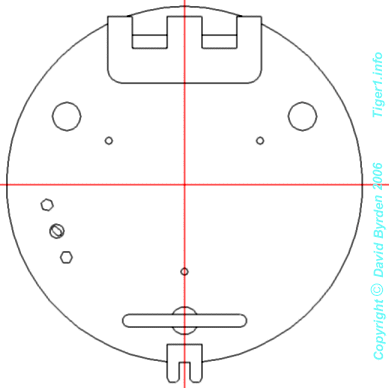
The hatch lid for the drum cupola was relatively complex. This diagram shows the appearance of its upper side, as initially designed. The lid had an armour thickness of 15mm. This was less than the surrounding turret roof, which was 25mm.
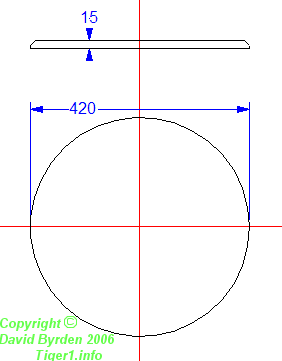
The core of the lid was a steel disc. The diagram above shows two views of the disc, which was 420mm wide.
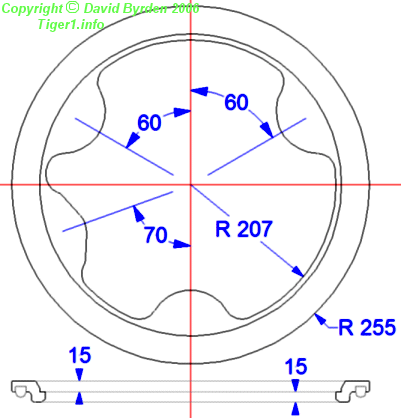
The disc was seated in a forged steel ring, giving the hatch lid an overall diameter of 510mm. The disc and ring were smoothly welded on their upper face; it is difficult to discern the joint. This diagram shows a plan and profile of the ring,
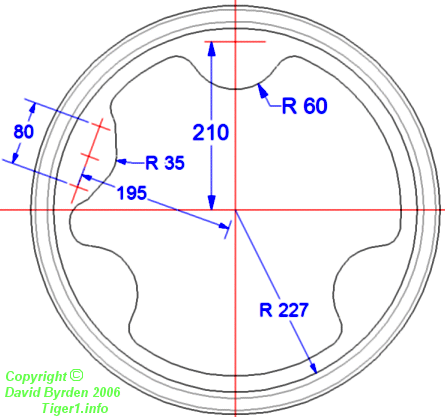
The ring carried a rubber seal around its edge to prevent water entering the cupola. It had four protrusions to support three handles and a lock. This diagram shows the underside of the ring.
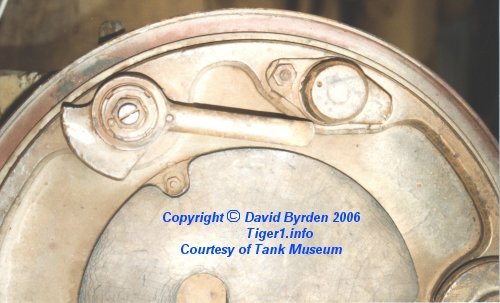
This photo shows the underside of a hatch lid (at Bovington Museum, before restoration).The rubber seal is missing, and red primer paint can be seen in the channel where it once sat. The shape of the forged steel ring is clear.
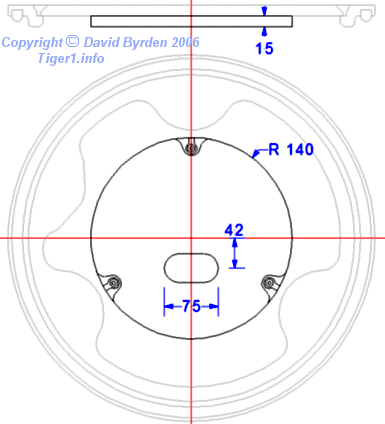
A soft head pad, of 15mm thickness, was screwed into the bottom of the hatch lid. There was an oval hole in the head pad; I don't know the purpose of this hole. It had no corresponding feature on the outside of the lid.
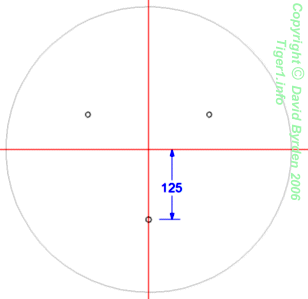
The three screws of the head pad protruded through the upper side of the lid, where they were welded into place.
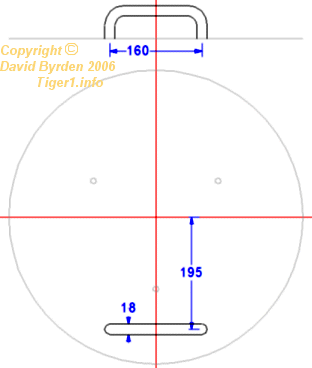
A handle made of 18mm rod was welded to the outer face of the hatch lid.
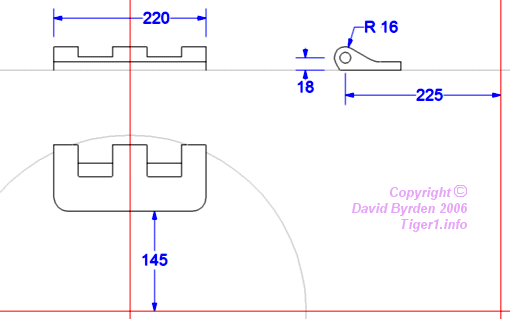
One side of a hinge was welded to the lid.
[1] Survey of Tiger 250122, at Bovington museum, by David Byrden